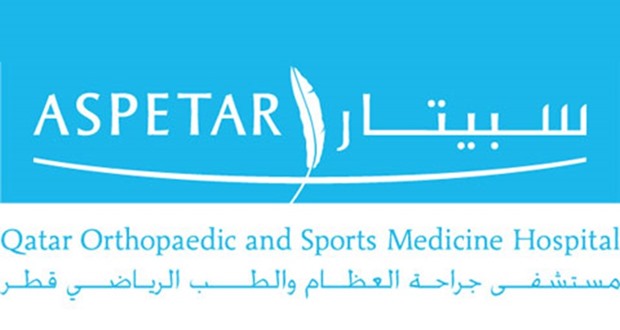Aspetar, the orthopaedic and sports medicine hospital, has recently introduced a locally-developed protocol for the treatment and rehabilitation of hamstring injuries in athletes, drastically improving the quality of care.
Developed following comprehensive, evidence-based research, Aspetar has established the standardised protocol to accelerate the rehabilitation of players from injury. The protocol is aimed at addressing some of the most common aspects of hamstring injuries, which occur mainly in football, but can be adjusted to address the needs of athletes competing in various other sports too.
Hamstring injuries are usually associated with sports that involve running at high speed as well as rapid acceleration or deceleration, such as sprinting, jumping, pivoting, turning or kicking. A vicious cycle of re-injury is not uncommon, resulting in significant morbidity in terms of symptoms, reduced performance, and time lost from taking part in a sport.
Extensive research conducted by the Aspetar Sports Injury and Illness Prevention Programme (ASPREV) during the last three years on QSL players at Aspetar identified roughly 100 hamstring injuries per year – one for every 1,000 hours of participation in matches and training. These time-loss injuries can have a very significant impact on a team, both in terms of their direct cost, reduced squad availability and ultimately sporting success.
As a result, sports science and medicine has paid increasingly close attention to hamstring injuries in an effort to decrease their number and to reduce the impact on team performance. Indeed, since using this protocol, Aspetar has recorded an average return to sport time of 23 days, with a low rate of re-injury among athletes treated with it.
Aspetar’s hamstring protocol consists of six stages including three that focus on physiotherapy and three that are sport specific. These are designed to build strength and involve the early but safe resumption of repeated high-speed running and direction change movements. Set criteria based on specific physical testing must be met before allowing progression to the next stage. Daily measurements of subjective pain, range of movement or flexibility and strength allows Aspetar’s clinicians to adapt the protocol for the athlete.
In an effort to share skills and knowledge with colleagues across the globe, the IOC accredited research centre has made the protocol publicly available through a series of 34 videos on its YouTube channel, detailing the stages of the innovative approach to hamstring injury treatment and rehabilitation. These videos include in-depth explanations of the steps used by Aspetar experts to assess injuries, as well as apply rehabilitation techniques and exercises.
Commenting on the new protocol, Dr Mohammed Ghaith al-Kuwari, Acting Director General of Aspetar, said: “In addition to being renowned for the treatment of injuries, Aspetar is a leading research centre and we continually apply this expertise to improve the delivery of clinical care to athletes. The hamstring protocol highlights the extent of our research capabilities, the quality of our experts and our focus on innovation and research in sports medicine – crucial components in enhancing sports performance and enabling athletes to fulfil their true sporting potential. This protocol perfectly illustrates the approach our experts adopt in identifying, treating and preventing injuries. Developments such as these are crucial in helping realise Aspetar’s vision of becoming a global leader in sports medicine by 2020.”
Dr al-Kuwari continued: “I’m very proud of our team for developing this one-of-a-kind hamstring protocol which benefits local, regional and international athletes. Our highly trained sports science research team drew on Aspetar’s state-of-the-art equipment and used cutting-edge techniques to gather data in collaboration with Aspetar’s National Sports Medicine Programme (NSMP). We’re grateful to the local clubs and athletes who helped gather the necessary data and shape and improve the protocol. Their collaboration and support is highly appreciated.”
Meanwhile, Nicol van Dyk, Clinical Sports Physiotherapist at Aspetar, said: “In the past, there was no gold standard for the treatment for hamstring injuries. This protocol is aimed at the typical injuries we see on a regular basis, especially among footballers and could be adjusted to benefit other athletes.”
Aspetar boasts one of the most advanced rehabilitation departments in the region, which is integral to Aspetar’s multidisciplinary approach to athlete management. The hospital’s method focuses on assessment and treatment of injured athletes by implementing personalised injury treatment programmes.
Utilising an evidence-based model, Aspetar’s experienced practitioners aim to return players to their pre-injury performance levels as quickly and safely as possible. The hospital has a proven track record of treating international athletes in track and field, weightlifting, and professional footballers from all major leagues.



